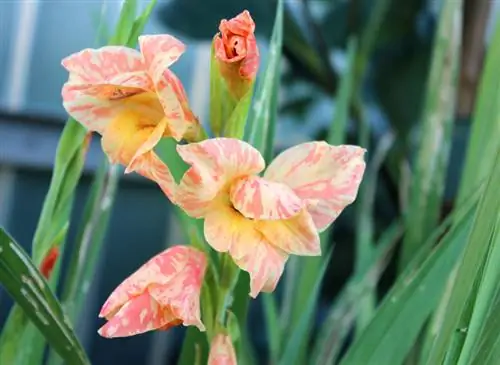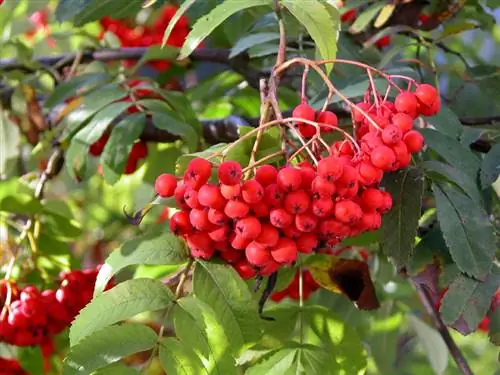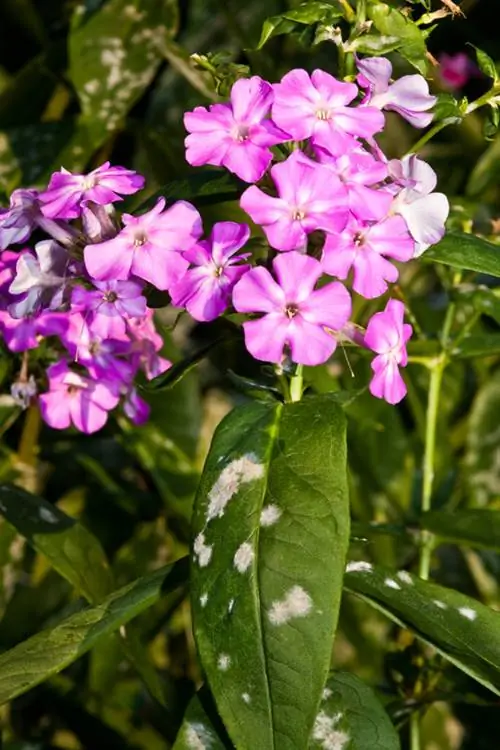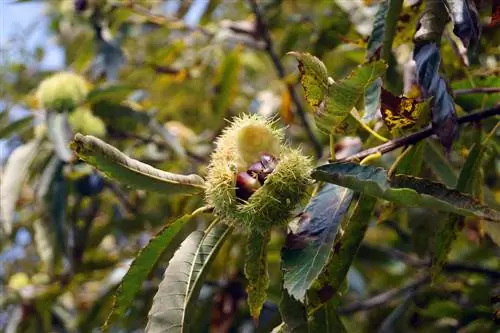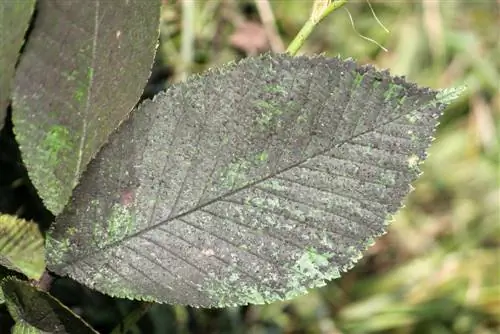- Author admin [email protected].
- Public 2023-12-16 16:46.
- Last modified 2025-01-23 11:20.
Although gladioli are among the very robust onion plants, they are not completely immune to diseases and pest infestation. We have briefly summarized the most important diseases and pathogens and how to combat them for you below.

What are the most common gladiolus diseases and how do you combat them?
The most common gladiolus diseases are thrips, wet and dry rot and lacquer scab. Regular showering, changing locations, removing diseased plants and storing bulbs correctly in winter help to combat this.
Thirpse
The insects, also known as bubble feet, feed on the plant juices. The infestation can be recognized by whitish to silvery shimmering suction points. If you look closely, you will find tiny, crusty, black drops of feces. In the case of severe or permanent infestation, the leaves and flowers become crippled and subsequently dry out.
Combat
Thrips don't like moisture. Therefore, shower the gladioli thoroughly on a regular basis. It can also be helpful to put up blue glue boards (€14.00 on Amazon) (blue boards).
Don't wait until the leaves have completely fallen in autumn to dig up the bulbs, but pull the bulbs out when the leaves at the bottom are still green. The thrips are found in this area of the plants and can be cut off along with the foliage. Destroy the leaves in the trash as the bladderworts can survive in the warm compost pile.
Thirps in the onions can be recognized by the brown spots and the shrinkage of the tubers. Destroy these bulbs immediately to prevent the pests from spreading. Do not store the tubers too warm as the insect pests are very sensitive to cold. Temperatures of around five degrees are ideal.
Wet rot or dry rot
In most cases, these diseases are the result of an unsuitable location. If the substrate is too dry, the tip of the gladiolus turns yellow and dies. If it is too moist, wet rot forms at the base of the leaves and the rotten stem falls over.
Combat
Destroy diseased plants including the bulb during the growing season. Gladiolus may not be planted in the same place for several years. Therefore, look for a more suitable place for the garden beauties.
Lack scab (basal rot)
At the base of the leaves, many small, red-brown and raised pustules or black-brown stripes appear. The leaves become rotten and soft and eventually collapse. Lacquer scab also affects the bulbs, which show sunken brown spots with a slightly raised edge and a lacquer-like coating. The small brood nodules are also affected by basal rot.
Combat
Here, too, the only thing that helps is to destroy the plants immediately and not to plant any more gladioli in the same location in the next few years. Chemical agents to combat the plant disease are currently not available.
Tip
If the gladiolus bulbs sprout poorly or if the bulbs shrink into hard mummies during winter storage, the gladiolus could be infected with bulb rot. To prevent the spread of this disease, store bulbs properly and check them regularly during the winter. Throw away infected tubers immediately.

